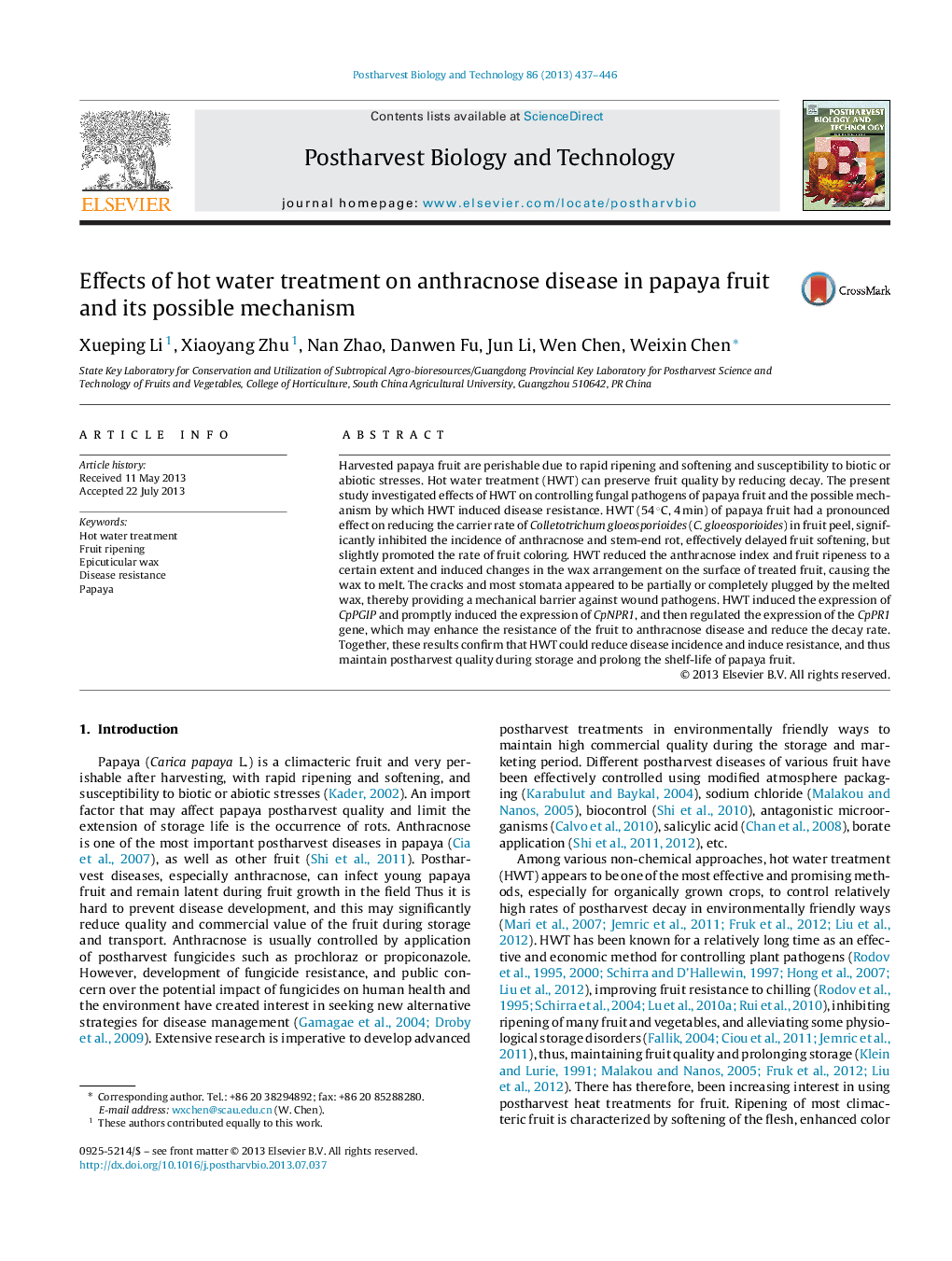| Article ID | Journal | Published Year | Pages | File Type |
|---|---|---|---|---|
| 6378813 | Postharvest Biology and Technology | 2013 | 10 Pages |
Abstract
Harvested papaya fruit are perishable due to rapid ripening and softening and susceptibility to biotic or abiotic stresses. Hot water treatment (HWT) can preserve fruit quality by reducing decay. The present study investigated effects of HWT on controlling fungal pathogens of papaya fruit and the possible mechanism by which HWT induced disease resistance. HWT (54 °C, 4 min) of papaya fruit had a pronounced effect on reducing the carrier rate of Colletotrichum gloeosporioides (C. gloeosporioides) in fruit peel, significantly inhibited the incidence of anthracnose and stem-end rot, effectively delayed fruit softening, but slightly promoted the rate of fruit coloring. HWT reduced the anthracnose index and fruit ripeness to a certain extent and induced changes in the wax arrangement on the surface of treated fruit, causing the wax to melt. The cracks and most stomata appeared to be partially or completely plugged by the melted wax, thereby providing a mechanical barrier against wound pathogens. HWT induced the expression of CpPGIP and promptly induced the expression of CpNPR1, and then regulated the expression of the CpPR1 gene, which may enhance the resistance of the fruit to anthracnose disease and reduce the decay rate. Together, these results confirm that HWT could reduce disease incidence and induce resistance, and thus maintain postharvest quality during storage and prolong the shelf-life of papaya fruit.
Related Topics
Life Sciences
Agricultural and Biological Sciences
Agronomy and Crop Science
Authors
Xueping Li, Xiaoyang Zhu, Nan Zhao, Danwen Fu, Jun Li, Wen Chen, Weixin Chen,
